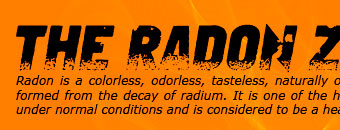 |
 |
 |
||||
|
||||||
| Call: 417-844-0942 | ||||||
|
»Sun Exposure This page provides an overview of how the sun’s energy is needed for survival and how various types of ultraviolet radiation that can be dangerous to our skin. Overview While some exposure to sunlight can be enjoyable and healthful, too much can be dangerous. Ultraviolet radiation (UV) comes naturally from the sun. UV is divided into three different categories based on wavelength. Wavelength is the distance between two successive peaks of a wave. UV wavelengths are measured in nanometers (nm) or one billionth of a meter. The shorter the wavelength the higher the energy. UVA wavelengths (315-400 nm) have the longest wavelengths, and are only slightly affected by ozone levels. Most UVA radiation is able to reach Earth's surface and can contribute to sunburn, skin aging, eye damage, and can suppress your immune system. UVB wavelengths (280-325 nm) are strongly affected by ozone levels. Decreases in stratospheric ozone mean that more UVB radiation can reach Earth's surface,causing sunburns, snow blindness, immune system suppression, and a variety of skin problems including skin cancer and premature aging. UVC wavelengths (180-280 nm) have the shortest wavelengths, and are very strongly affected by ozone levels. Virtually all UVC radiation is absorbed by ozone, water vapor, oxygen and carbon dioxide before reaching Earth’s surface. Therefore, the UV radiation reaching Earth’s surface is largely composed of UVA with some UVB. Almost half the daytime total UV radiation is received between the hours of 10 a.m. an 4 p.m. Even on a cloudy day, you can get sunburned because of UV radiation. Caution Even on a cloudy day you can get sunburn from UV radiation. One in five Americans develops skin cancer, and one person dies from this disease every hour. The incidence of melanoma, the most serious type of skin cancer, is increasing faster than most other forms of cancer. Children are of particular concern since most of the average person's lifetime sun exposure occurs before the age of 18. There are simple protective measures that you can take to limit exposure to UV rays. |
|
|||||